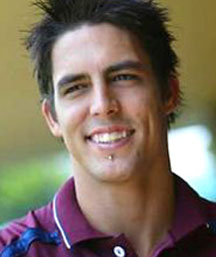SYDNEY, (Reuters) – Australia will take a long, hard look at their cricketing future after England’s Ashes triumph yesterday and just may find it was one of their perceived strengths that let them down over the last six weeks.
The long decline of the Australia team from the side that put England to the sword 5-0 four years ago to the squad that failed to regain the Ashes on home soil has been well documented.
The loss of bowling greats like Shane Warne and Glenn McGrath without the talent coming through to replace them, some erratic selections, the loss of basic disciplines like fielding well and even injuries and bad luck have all played their part.
In this Ashes series, however, it is difficult to look beyond the performance of their top order batsmen.

Australia’s top four batsmen have so far accumulated just 763 runs between them in eight innings in this series.
If you take out the 352 accumulated by the best performer, opener Shane Watson, that falls to a paltry 411.
By contrast, England’s top four have rattled up 1,593 over the four Ashes tests and even without the prolific Alastair Cook (577), they are still comfortably ahead of the Australian tally.
No matter how good your bowlers are, and Australia’s have been patchy at times in this series, they must have something to bowl at if they are to put any pressure on the opposing batsmen.
None of Australia’s top four made a century, while all of England batsmen did with Cook and Trott both accumulating two.
Long before Warne and McGrath pitched up with their wicket-busting bowling, Australia’s batting strength was assumed, and that was no less the case at the start of the 2010-11 series.
Captain Ricky Ponting is the second most prolific batsman ever in test cricket and his vice captain Michael Clarke is a proven test performer.
FEW ALTERNATIVES

Opener Simon Katich, lost after the second test to an Achilles injury, is a seasoned test player and his replacement Phillip Hughes a hugely promising talent, albeit one found out by England when they won the Ashes last year.
Watson has a major problem converting half centuries to centuries but at least he has been making fifties on a regular basis and is also fairly decent bowling option.
This series, however, they have to a large part looked like the “bunnies” Mitchell Johnson and Co wanted to make of Cook and England skipper Andrew Strauss in the face of a tourist attack which was supposed to struggle on the hard Australian tracks.
Whether the pressure of losing successive Ashes got to them, or the dressing room unrest reported and denied in November did exist, or the England bowlers were just too good, the fact remains there is not any better batting talent out there.
So, short of a few tweaks in the order — perhaps giving Usman Khawaja his debut to allow Ponting and Clarke to move down — the Australian selectors do not really have many alternative batting options ahead of the fifth test in Sydney next week.
The injury to the luckless fast bowler Ryan Harris will allow them to make the sensible move of including a spinner for Sydney without dropping Johnson or his fellow quicks Peter Siddle and Ben Hilfenhaus.
And perhaps for the batsmen, the release from the pressure of contesting their country’s most coveted trophy might allow them to play more freely and their true talent will shine through at the Sydney Cricket Ground.





